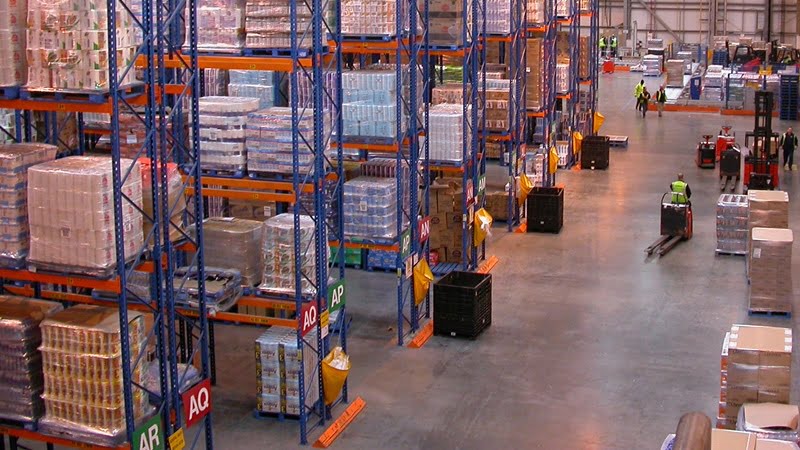Warehouses are the backbone of many industries, serving as storage hubs for inventory, materials, and supplies. Maximizing warehouse storage space is crucial for operational efficiency and cost savings. When your warehouse is organized and optimized, it can lead to faster order fulfillment, reduced labor costs, and improved inventory management. In this article, we will explore some effective strategies to optimize warehouse storage space for maximum efficiency.
1. Analyze and Evaluate Warehouse Layout
The first step in optimizing warehouse storage space is to thoroughly analyze and evaluate your current warehouse layout. This includes examining the physical space, the location of different storage zones, and the flow of goods in and out of the warehouse. Identify any bottlenecks or inefficiencies in the layout that may be hindering productivity and space utilization.
Consider hiring a professional warehouse optimization consulting firm like HCO Innovations to conduct a warehouse layout evaluation. They can provide a fresh perspective and recommend effective strategies to improve storage capacity and workflow.
2. Implement Vertical Storage Solutions
One of the most effective ways to optimize warehouse storage space is by going vertical. Utilizing the vertical space in your warehouse can significantly increase storage capacity without the need for additional square footage.
Invest in sturdy and reliable shelving systems that can accommodate vertical storage. These systems should be adjustable and configurable to meet the changing needs of your inventory. Additionally, consider installing mezzanine floors or pallet racking systems to maximize vertical storage space.
3. Utilize Efficient Storage Systems
Choosing the right storage systems can make a big difference in optimizing warehouse storage space. Depending on your inventory and operational requirements, consider implementing the following efficient storage systems:
- Pallet racking: Ideal for storing large quantities of homogeneous products.
- Cantilever racking: Perfect for long and bulky items like pipes or lumber.
- Flow racks: Designed for high-density storage and easy access to products.
- Stacking frames: Ideal for maximized vertical storage of pallets.
- Mobile shelving: Offers compact storage and easy accessibility.
Implementing these storage systems will help you utilize space more efficiently, improve accessibility to inventory, and enhance overall warehouse productivity.
4. Optimize Aisle Widths
While it's important to maximize storage space, it's equally important to ensure smooth and efficient movement within the warehouse. Optimizing aisle widths can help achieve both objectives.
Assess the type of equipment and forklifts used in your warehouse and determine the minimum aisle width required for safe and efficient maneuvering. By reducing unnecessary aisle widths and utilizing narrower aisles, you can create more storage space without compromising operational safety.
5. Implement Efficient Inventory Management Practices
Effective inventory management is crucial for optimizing warehouse storage space. Implementing efficient inventory management practices can help reduce excess inventory and ensure optimal use of available storage space.
Invest in a robust inventory management system that provides real-time visibility of inventory levels, tracks product movement, and enables accurate demand forecasting. Adopting an organized labeling and barcoding system can also streamline inventory tracking and retrieval.
6. Implement Lean Principles
Implementing lean principles in your warehouse can help eliminate waste and improve storage utilization. Lean principles focus on streamlining processes, reducing unnecessary movement, and maximizing value-added activities.
Encourage the use of lean tools and techniques such as 5S methodology, visual management systems, and continuous improvement initiatives. By eliminating clutter, standardizing processes, and optimizing workflow, you can free up valuable storage space and enhance overall operational efficiency.
7. Regularly Conduct Safety Assessments
Safety is paramount in warehouse operations. Regularly conducting safety assessments can help identify and mitigate potential hazards, ensuring a safe working environment for your employees and preventing accidents that can lead to damage and loss of inventory.
Ensure that all safety protocols, such as proper stacking and securing of pallets, are strictly followed. Regularly train your employees on safe material handling practices and provide them with the necessary protective equipment.
Conclusion
Optimizing warehouse storage space is essential for achieving maximum efficiency and cost savings. By analyzing and evaluating your warehouse layout, implementing vertical storage solutions, utilizing efficient storage systems, optimizing aisle widths, implementing efficient inventory management practices, incorporating lean principles, and conducting regular safety assessments, you can increase storage capacity, enhance operational efficiency, and reduce material handling costs.
For comprehensive warehouse optimization and forklift fleet management solutions, partnering with a trusted consulting firm like HCO Innovations can help you achieve significant cost reductions and operational efficiency. Their expertise in warehouse optimization and turnkey maintenance solutions, combined with advanced cost-tracking software, makes them the ideal partner for optimizing warehouse operations and reducing material handling costs.

